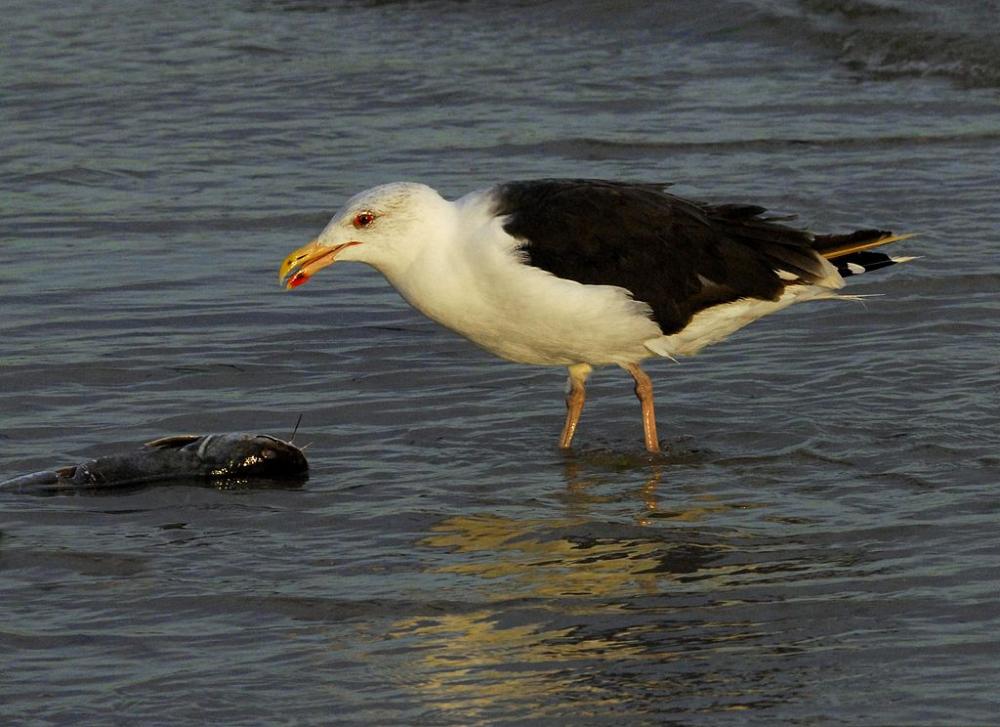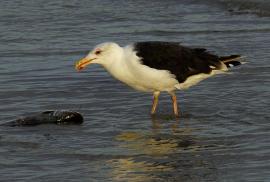Guide to Boreal Birds
Overview
Our largest gull, this coastal species accompanies the ever-present Herring Gull at all times of the year, even during the summer, when they nest together in mixed colonies. However, the Black-backed always asserts dominance over its smaller relative. It preys on almost anything smaller than itself, including Dovekies, small ducks, petrels, fish, and shellfish, as well as the eggs and young of other gulls. Although found close to human habitations, it is a shyer bird than the Herring Gull.
Description
30" (76 cm). A very large gull. Adult has black back and wings, with rest of plumage white. Bill yellow and legs pinkish. Immature mottled with brown, paler on head and breast, with black tail tip and a dark bill.
Voice
Similar to that of Herring Gull, but deeper and more guttural, a deep keeow.
Nesting
3 olive eggs, with dark brown blotches, placed in a ground nest lined with grass.
Habitat
Coastal beaches, estuaries, and lagoons; also at refuse dumps. Less commonly on inland lakes and rivers.
Range/Migration
Breeds from Labrador south to Carolinas, rarely farther; also on Great Lakes. Winters south to Florida. Also in Eurasia.



